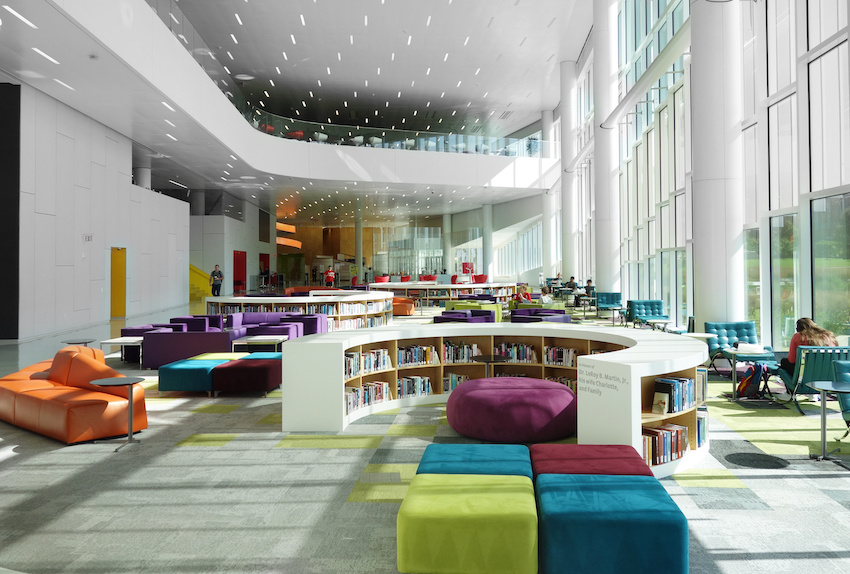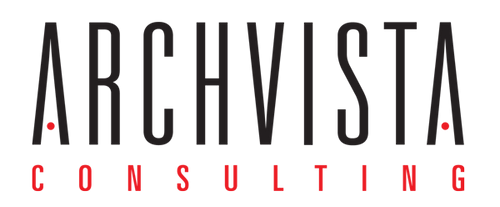Click the title or “+” button for an overview of an event. To view event details or register for an event click the “Read more” button of the expanded event overview.
Credits: 1 AIA LU/HSW; 1 AIBD P-CE; 0.1 IACET CEU
May qualify for learning hours through most Canadian architectural associations

RALEIGH,NC/USA – 8-24-2018: The James B Hunt library on Centennial Campus of NC State University in Raleigh NC
Now more than ever, the community importance of school buildings is being recognized. Educational buildings must serve many functions beyond classroom education, such as providing essential social support services to the communities they serve. Multiple programming goals demand flexible spaces, and in addition, school design must focus on sustainability and security. Many firms are turning to BIM technology not only to lower costs and make the construction process more efficient, but also to design safer and better-performing school buildings. In this webinar, you will hear from a panel well-versed in using BIM for innovative educational projects who will share their experience and lessons learned.
 Chris Ambridge AIA, is an Associate Principal at cg+s architects. Chris has been at the firm since 2004 and has worked mainly on k-12 education projects within the Washington DC area. Chris is particularly interested the design opportunities that arise from close collaboration across a team during the design and construction process.
Chris Ambridge AIA, is an Associate Principal at cg+s architects. Chris has been at the firm since 2004 and has worked mainly on k-12 education projects within the Washington DC area. Chris is particularly interested the design opportunities that arise from close collaboration across a team during the design and construction process.
Saravanan Bala, AIA, LEED-AP, NCARB, ALEP is the Principal of the Education Studio  and is an Accredited Learning Environment Planner. He is an accomplished architect who has designed and managed several successful high schools around the state. Saravanan is a nationally recognized expert in evolutionary trends in curriculum, pedagogy and learning, and brings a wealth of research and data pertaining to the role educational environments can play to catalyze learning outcomes. He frequently presents at national and regional conferences and specializes in helping school districts developing their own pathways to achieving their educational goals.
and is an Accredited Learning Environment Planner. He is an accomplished architect who has designed and managed several successful high schools around the state. Saravanan is a nationally recognized expert in evolutionary trends in curriculum, pedagogy and learning, and brings a wealth of research and data pertaining to the role educational environments can play to catalyze learning outcomes. He frequently presents at national and regional conferences and specializes in helping school districts developing their own pathways to achieving their educational goals.
 Matt Johnson, RA is an Associate at Orcutt | Winslow specializing in K-8 design. His early experience with both commercial and hospitality architecture offers an understanding of complicated project design within large project teams and the practicalities of how a project comes to fruition. He has taken this experience and uses his passion and expertise in Building Information Modeling (BIM) to continue to advance project design and constructability, to allow for complete project efficiency in an integrated delivery model. As the BIM advisor for Orcutt | Winslow Education, he counsels colleagues in how to set up projects for the greatest efficiency and is a resource for day-to-day BIM application. Matt is also a Faculty Associate at Arizona State University, teaching BIM to upper division architecture students. Beyond his technical capabilities, Matt has a passion for “…designing places and experiences that attempt to enhance, focus and give hope to the human experience on earth.” From his perspective educational design offers that opportunity within its own microcosm of the community.
Matt Johnson, RA is an Associate at Orcutt | Winslow specializing in K-8 design. His early experience with both commercial and hospitality architecture offers an understanding of complicated project design within large project teams and the practicalities of how a project comes to fruition. He has taken this experience and uses his passion and expertise in Building Information Modeling (BIM) to continue to advance project design and constructability, to allow for complete project efficiency in an integrated delivery model. As the BIM advisor for Orcutt | Winslow Education, he counsels colleagues in how to set up projects for the greatest efficiency and is a resource for day-to-day BIM application. Matt is also a Faculty Associate at Arizona State University, teaching BIM to upper division architecture students. Beyond his technical capabilities, Matt has a passion for “…designing places and experiences that attempt to enhance, focus and give hope to the human experience on earth.” From his perspective educational design offers that opportunity within its own microcosm of the community.
 A licensed architect since 2016, Eddie Van Slambrouck, LEED AP, ALEP Project Architect, QKA Architecture developed his interest in design from a wide array of experiences, from building backyard chicken coops to planning large infrastructure projects. Further, while earning his Master of Architecture degree, he received several jury prize awards that fueled his interest in digital media and 3D modeling – a skill that enables his clients to accurately visualize and approve the final project on screen before construction begins. In addition, as a LEED Accredited Professional since 2008, Van Slambrouck has a strong expertise in sustainable design and renewable energy systems.
A licensed architect since 2016, Eddie Van Slambrouck, LEED AP, ALEP Project Architect, QKA Architecture developed his interest in design from a wide array of experiences, from building backyard chicken coops to planning large infrastructure projects. Further, while earning his Master of Architecture degree, he received several jury prize awards that fueled his interest in digital media and 3D modeling – a skill that enables his clients to accurately visualize and approve the final project on screen before construction begins. In addition, as a LEED Accredited Professional since 2008, Van Slambrouck has a strong expertise in sustainable design and renewable energy systems.
Learning Objectives:
- Describe how BIM can be used to improve the design and safety of buildings.
- Define how BIM can improve design adherence to the requirements of national and local codes.
- Explain how the different BIM modes of collaboration across disciplines improve the design and safety of buildings.
- List the ways in which BIM can assist designers in easily testing projects for sustainability and energy efficiency.
